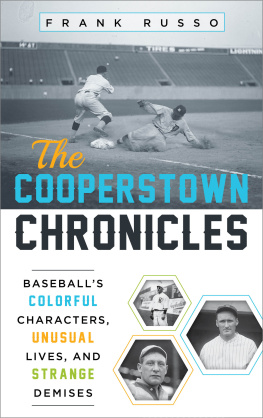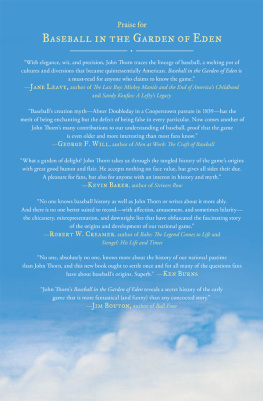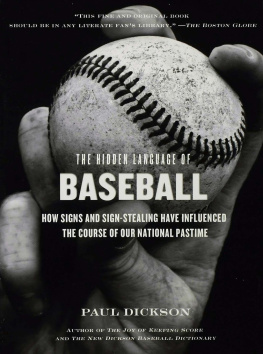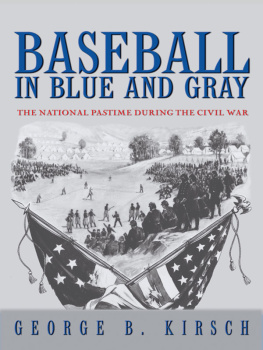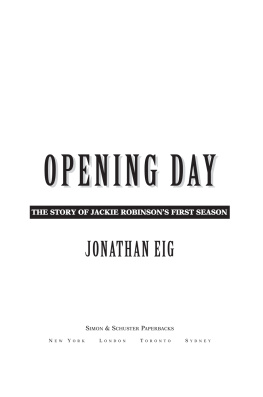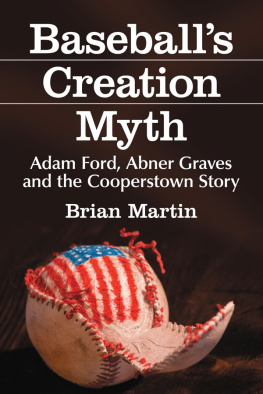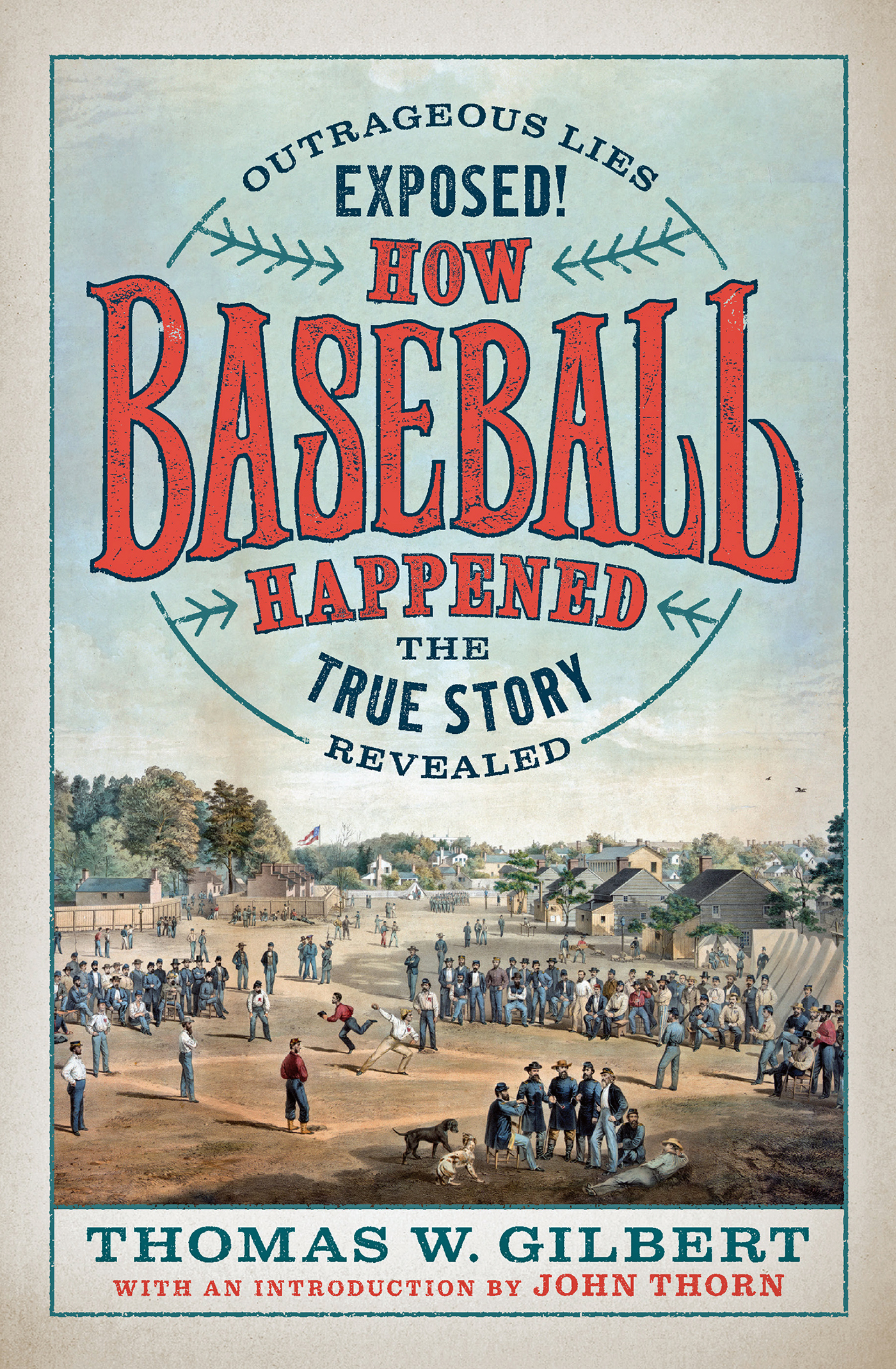Praise for
How Baseball Happened
How Baseball Happened is a brilliant new approach to our game and its author tells a hundred stories you havent heard before.
John Thorn, Official Historian of Major League Baseball
In How Baseball Happened, Thomas W. Gilbert brilliantly gathers hidden treasure long buried in newspaper accounts and diaries to present a rich and nuanced picture of American baseball as it grew and blossomed. Along the way, he explodes myths that have long shaped our understanding of this great game. This is a tart and funny trip through the raucous and aspiring culture that shaped baseball, with its volunteer firefighters, urban professionals, bloodstained butchers, and brawling gamblers.
Edward Achorn, author of Every Drop of Blood, The Summer of Beer and Whiskey, and Fifty-nine in 84
Tom Gilbert gives us a lively and often funny account of how baseball became THE national sport. At once Irreverent and loving, Gilbert explodes baseballs founding myths while painting a rich portrait of a forgotten America. For baseball lovers and history buffs alike.
Robert Kagan, senior fellow at the Brookings Institution and author of The Jungle Grows Back: America and Our Imperiled World
How Baseball Happened
Published in 2020 by
David R. Godine, Publisher
Boston, Massachusetts
www.godine.com
Copyright 2020 by Thomas W. Gilbert
All Rights Reserved.
No part of this book may be used or reproduced in any manner whatsoever without written permission from the publisher, except in the case of brief quotations embodied in critical articles and reviews. For more information, please visit our website.
library of congress cataloging-in-publication data
Names: Gilbert, Thomas W., author.
Title: How baseball happened : Outrageous lies exposed! the true story revealed / Thomas W. Gilbert ; with an introduction by John Thorn.
Description: Boston, MA : David R. Godine, Publisher, 2020. | Includes bibliographical references and index.
Identifiers: LCCN 2020019007
ISBN 9781567926774 (hardcover)
ISBN 9781567926880 (ebook)
Subjects: LCSH: BaseballUnited StatesHistory19th century. | BaseballEconomic aspectsUnited States.
Classification: LCC GV863.A1 G5754 2020 | DDC 796.3570973dc23
LC record available at https://lccn.loc.gov/2020019007
Contents
Introduction
T o those who care about the past, great institutions may be of most interest when they begin. Why? Because in their sparse fields and green shoots may be seen essential attributes less visible when the endeavor is in full flower. How did photographs come to be, or movies or automobiles or computers? All origin stories fascinate.
In baseball, which is the matter at hand, why nine innings, nine men, and 90 feet? Why a bat and ball and, later, a glove? Why are the bases set in a circle? Indeed, why baseballas a game, then a sport, then an emblem for the nation in which it was formed if not truly born?
To the fan of today the answers seem so obvious as to require no explanation, yet to historians of the game they have been, until quite recently, enduring mysteries. In the 1840s and 1850s, the reasons for the rise of baseball would have been first, the novelty and excitement of play, an unseemly activity for grown men; second, the opportunity for urbanites to exercise amid fresh air in a sylvan setting; and third, the assertion of a binding national identity, independent of John Bull and his national game of cricket. As America entered the 1860s and was nearly torn asunder, other reasons emerged as to how baseball happened, and why.
About ten years ago, when I was completing my own book on the early game, I was asked at a cocktail party, What, after all your years of research, remains the great unanswered question in baseball?
With no forethought and yet not skipping a beat, I offered, What is it that is so satisfying about a game of catch?
In my eighth decade I am a bit closer to an answer, I suspect. The simple idea of to and fro suffices to explain all that was once complex.
I still follow baseball every day, watching more than a hundred games each season. Baseball may be the one thing that I have cared about unceasingly since I was five. In my earlier work I went forward, advancing analytic notions of how the game might be improved, or at least measured more realistically. I began to wonder about what might really be going on, hidden from sight yet discernible from the games statistical residue. More recently I have looked back, to a time a century and more before my birth, to provide a firmer grasp of baseballs serpentine story and the lies and legends that have attached to it. The pleasure I take in baseball games today is enriched by a knowledge of distant games and long-dead players no less vivid for their seeming invisibility.
I attended my first games at the Polo Grounds and Ebbets Field, and my worship of baseball heroesfirst on cardboard, then on television, and at last at the ballparkbegan with Duke Snider and Jackie Robinson. Today my favoritesa grownup may not be permitted heroes, right?are the players and innovators whose stories are fascinating because what they did, they did first: Doc Adams, George Wright, Al Reach, King Kelly... oh, I could go on.
Why baseball? One may approach the question philosophically, socially, culturally, and of course historically. Tom Gilbert looks not in box scores, in game accounts, or in baseball rules changesand certainly not in baseballs own ridiculous creation talesbut instead in larger cultural, economic, and social trends and in the whole lives and times of the men who played, promoted, and wrote about the game. In his splendidly created necropolis he summons the ghosts of Jim Creighton and Joe Start and other ancient worthies to cavort once more.
When journalists become historiansa path often takenthey retain the useful guidelines of their former craft: who, what, where, when, and how. In their invaluable works, Robert Henderson and David Block addressed the origins of bat-and-ball games (the where and when) around the world. My own Baseball in the Garden of Eden moved from Europe and Africa to America and addressed the what, i.e., the facts surrounding the games beginnings rather than what self-anointed fathers of the game wished us to believe. Gilbert addresses how baseball happened and, delightfully, its anagram of who.
For himand for me; I have been convincedthe game may have been invented elsewhere but, like a certain tree, it grew in Brooklyn. People made this game grow, amid a swirl of larger cultural, economic, and social trends, and he tells their stories brilliantly.



